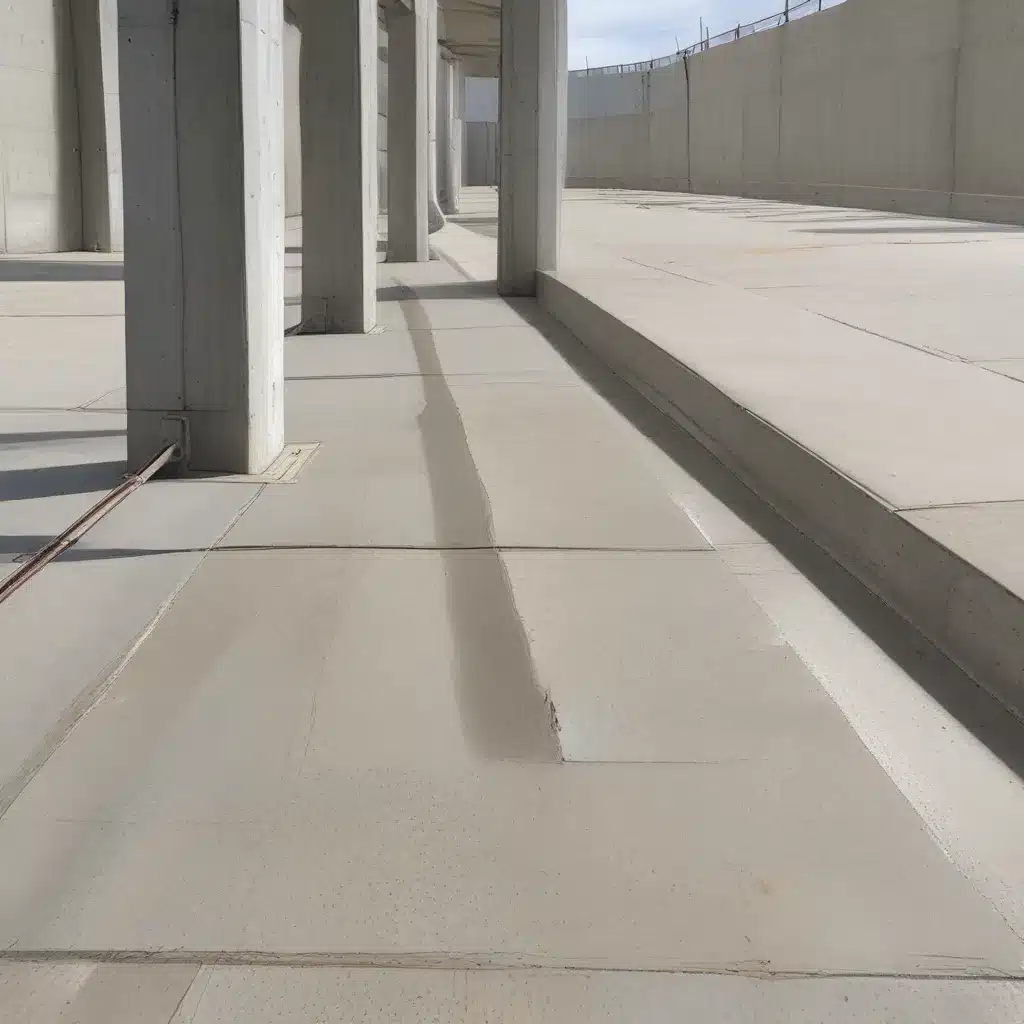
Avoiding the Crack-Up: Mastering the Art of Concrete Expansion
Have you ever stood in front of a building, admiring its sleek, flawless exterior, when suddenly, your eyes are drawn to a series of unsightly cracks, like a spider web creeping across the façade? If you’ve experienced this, then you know the importance of concrete expansion joints – those unsung heroes that safeguard our structures from the ravages of Mother Nature.
As a self-proclaimed “concrete connoisseur,” I’ve seen my fair share of expansion joint disasters. From the crumbling sidewalk that trips unsuspecting pedestrians to the ominous fissures snaking across a parking garage, these seemingly innocuous gaps can quickly turn into nightmares if not properly designed and installed. But fear not, my friends, for I’m here to share my expertise and guide you through the intricate world of concrete expansion joints.
Understanding the Fundamentals of Concrete Expansion
Let’s start with the basics. Concrete, like most materials, expands and contracts in response to changes in temperature and humidity. Imagine a hot summer day – the concrete surface heats up, causing it to expand. Then, as the sun sets and the temperature drops, the concrete begins to contract. This cycle of expansion and contraction can lead to the formation of cracks, which not only compromise the structural integrity of the concrete but also create unsightly blemishes.
Research from the Texas A&M Transportation Institute has shown that the rate of concrete expansion and contraction can vary significantly depending on factors such as the type of concrete, the thickness of the slab, and the environmental conditions. For example, a thick, heavily reinforced concrete slab in a hot, arid climate will experience more dramatic changes in size compared to a thin, lightly reinforced slab in a temperate region.
Expansion Joints: The Flexible Solution
Enter the humble expansion joint – the unsung hero of the concrete world. These ingenious gaps in the concrete serve as a safety valve, allowing the material to expand and contract without cracking or breaking. Imagine a long stretch of sidewalk: without expansion joints, the concrete would be like a tightly wound spring, ready to snap at the slightest provocation. But with strategically placed expansion joints, the sidewalk can flex and move, accommodating the natural changes in its dimensions.
According to the California Department of Transportation’s Concrete Pavement Guide, the key to successful expansion joint placement is understanding the specific characteristics of the concrete and the environment it will be exposed to. Factors such as the coefficient of thermal expansion, the slab thickness, and the expected temperature range all play a crucial role in determining the optimal spacing and design of the expansion joints.
The Anatomy of an Expansion Joint
Ah, but what exactly goes into the construction of an expansion joint? It’s not just a simple gap in the concrete, my friends. No, these unsung heroes are meticulously engineered to ensure maximum flexibility and durability.
At the heart of an expansion joint is a flexible filler material, often made of asphalt-impregnated fiber, compressible foam, or specialized sealants. This material allows the concrete to expand and contract without putting undue stress on the surrounding structure. Imagine a bungee cord – it stretches and compresses as needed, but always returns to its original form.
W.R. Meadows, a leading manufacturer of construction materials, offers a range of expansion joint filler products that are designed to withstand the rigors of concrete expansion and contraction. Their AIR-SHIELD THRU-WALL FLASHING, for example, is a self-adhering, flexible membrane that acts as both a vapor and moisture barrier, ensuring that the expansion joint remains sealed and protected from the elements.
But the expansion joint isn’t just about the filler material. The surrounding concrete must also be designed to accommodate the movement. This often involves the use of “dummy” or “control” joints, which are pre-formed grooves in the concrete that guide the crack propagation and direct the expansion along a predetermined path.
Expansion Joint Placement: A Balancing Act
Ah, but the true art of expansion joint placement lies in finding the perfect balance between flexibility and rigidity. Place the joints too far apart, and you risk the concrete cracking under the strain. Place them too close together, and you end up with a patchwork of gaps that looks more like a shattered windshield than a seamless surface.
At Concrete RT Townsville, our team of experts has mastered the delicate dance of expansion joint placement. We carefully analyze the unique characteristics of each project, taking into account factors like slab thickness, environmental conditions, and expected usage patterns. Then, we strategically position the expansion joints to create a flexible, resilient concrete surface that can withstand the test of time.
But it’s not just about the placement; the installation process is just as crucial. Improperly installed expansion joints can quickly become a source of leaks, cracks, and other structural issues. That’s why our team takes great care to ensure that the joint filler is properly secured, the surrounding concrete is properly prepared, and the entire assembly is sealed and protected from the elements.
Expansion Joints: The Unsung Heroes of Concrete
As you can see, concrete expansion joints are far more than just a simple gap in the pavement. They are the unsung heroes that safeguard our structures, ensuring that they can flex and move with the changing seasons without compromising their structural integrity.
Whether you’re building a new structure or maintaining an existing one, the proper design and installation of expansion joints is crucial. By understanding the fundamentals of concrete expansion, the anatomy of an expansion joint, and the art of proper placement, you can ensure that your concrete surfaces remain seamless, flexible, and resilient for years to come.
So, the next time you admire a sleek, flawless building, take a moment to appreciate the unsung heroes that make it all possible – the humble expansion joint. And remember, at Concrete RT Townsville, we’re here to help you master the art of concrete expansion, one joint at a time.

